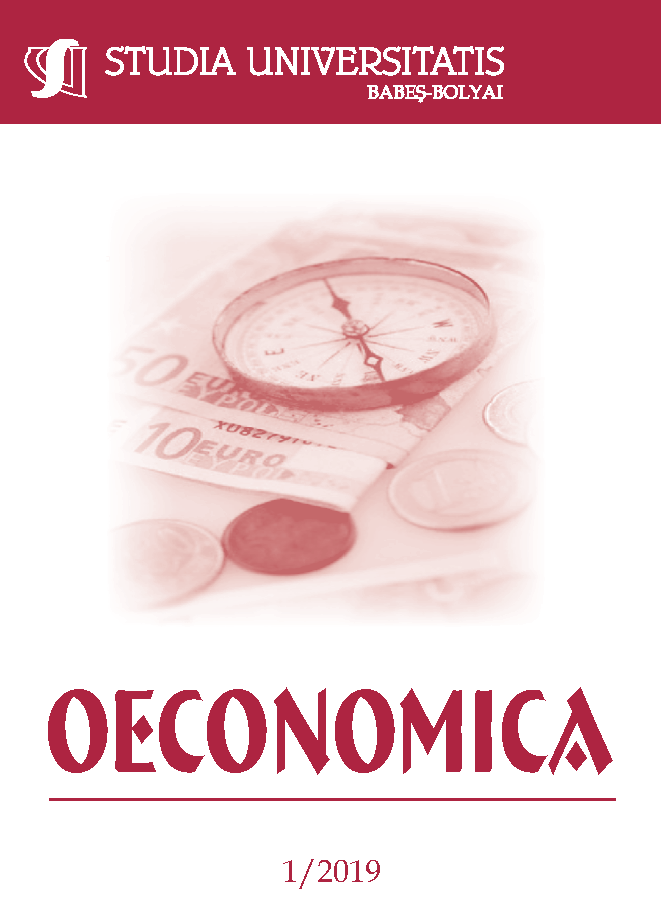ANALYSIS OF THE DEMAND FOR PRIVATE HEALTHCARE IN SOUTH AFRICA
DOI:
https://doi.org/10.2478/subboec-2019-0005Keywords:
households, externalities, demand structure, public goods, mixed goods, healthcareAbstract
Access to a good and healthy life is a human right recognised globally. The fight to deal with poverty and food insecurity as the top two sustainable development goals (SDGs) under the global agenda 2030 can only be achieved if a majority of the world population is able to participate in economic activities. However, the provision of healthcare is complicated by the nature of the demand and supply function. There is inefficient provision due to the positive externalities associated with healthcare provision and consequently the social efficiency is not achieved, especially when private provision is considered, and therefore the need for government involvement. This paper analyses the demand for private healthcare in South Africa, using the data collected from a general household survey with a sample of 21601 households. The results of the logistic regression model show that the gender of the head of a household, income, food security status, age of head of household and social grant and pension status were among the significant predictors of demand for private healthcare. The study provides insights on how provision of healthcare should be tailored so as to achieve maximum efficiency in public provision of healthcare.
JEL classification: I11, I15, I32, H41
References
Asteraye, N. (2002). Determinants of Demand for Health Care Services and their Implication on Health Care Financing : The Case of Bure Town, XI(1), 87–122.
Blavin, F., Ramos, C., Lallemand, N. C., Fass, J. (2017). Analyzing the Public Benefit Attributable to Interoperable Health Information Exchange.
Cameron, K., Song, J., Mnaheim, L., Dunlop, D. (2010). Gender Disparities in Health and Healthcare Use. Journal Of Womens Health, 19(9).
Czepiel, S. A. (n.d.). Maximum Likelihood Estimation of Logistic Regression Models : Theory and Implementation.
Doke, P. P. (2015). Gender issues in health sector. Journal of Krishna Institute of Medical Sciences University, 4(2), 10–18.
Dunga, S. H., Grobler, W. (2017). The Nexus of Food and Housing Insecurity in South. International Journal of Social Sciences and Humanity Studies, 9(2), 95–108.
Fikree, F. F., Pasha, O. (2004). Role of gender in health disparity: the South Asian context. Bmj, 328(7443), 823–826. https://doi.org/10.1136/bmj.328.7443.823
Goodman, A. C., Marin, S. (1998). HMOs and Health Externalities : A Local Public Good Perspective (August).
Grant, U. (2008). Health and Poverty Linkages : Perspectives of the chronically poor. Chronic Poverty Research Centre (February 2005).
Gubb James Meller-Herbert, O. (2009). Markets in health The theory behind the policy (December), 1–69.
Hernandez, D., Suglia, S. (2016). Leveraging the Social Determinants to Build a Culture of Health Housing as a Social Determinant of Health. Retrieved from https://healthequity.globalpolicysolutions.org/wp-content/uploads/2016/12/Housing2.pdf
HLEG. (2010). Gender and Health. High Level Expert Group Report on Universal Health Coverage for India, 295–300.
Mehtar, S. (2018). Guide to Infection Control in the Hospital. In international society for infectious diseases.
Mutyambizi, V. (2008). Country Case Study Health Insurance in South Africa. Health Economics Unit, Iniversity of Cape Town, 11.
Ngoma, C., Mayimbo, S. (2017). The Negative Impact of Poverty on the Health of Women and Children. Annals of Medical and Health Sciences Research, 7, 442–446.
Owusu-Sekyere, E., Chiaraah, A. (2014). Demand for Health Insurance in Ghana: What Factors Influence Enrollment? American Journal of Public Health Research, 2(1), 27–35. https://doi.org/10.12691/ajphr-2-1-6
Phipps, S. (2003). The Impact of Poverty on Health. CPHiSPC, (June).
Poor people ’ s experience of health and ill-health Foreword. (n.d.).
Price, J., Khubchandani, J., Webb, F. J. (2018). Poverty and Health Disparities: What Can Public Health Professionals Do? Health Promotions Practice, (March). https://doi.org/10.1177/1524839918755143
Rajasekar, S., Philominathan, P., Chinnathambi, V. (2006). Research Methodology, 1–53. https://doi.org/arXiv:physics/0601009v3
Rowlingson, K. (2011). Does income inequality cause health and social problems ? Joseph Rowntree Foundation, (September).
Statistics SA. (2017). General Household Survey. Statistical Release P0318, 21(4), 482. https://doi.org/10.1016/S0022-5223(12)00629-0
WALLIMAN, N. (2011). Research Methods (1st ed.). New York: Routledge.
WHO. (2013). DAC Guidelines and reference Series: Poverty and Health.
World Bank. (1992). The Demand for Health Care Services. Microeconomics of Healthcare and Insurance Markets, 55–90.
Downloads
Published
How to Cite
Issue
Section
License
Copyright (c) 2019 Studia Universitatis Babeș-Bolyai Oeconomica

This work is licensed under a Creative Commons Attribution-NonCommercial-NoDerivatives 4.0 International License.






